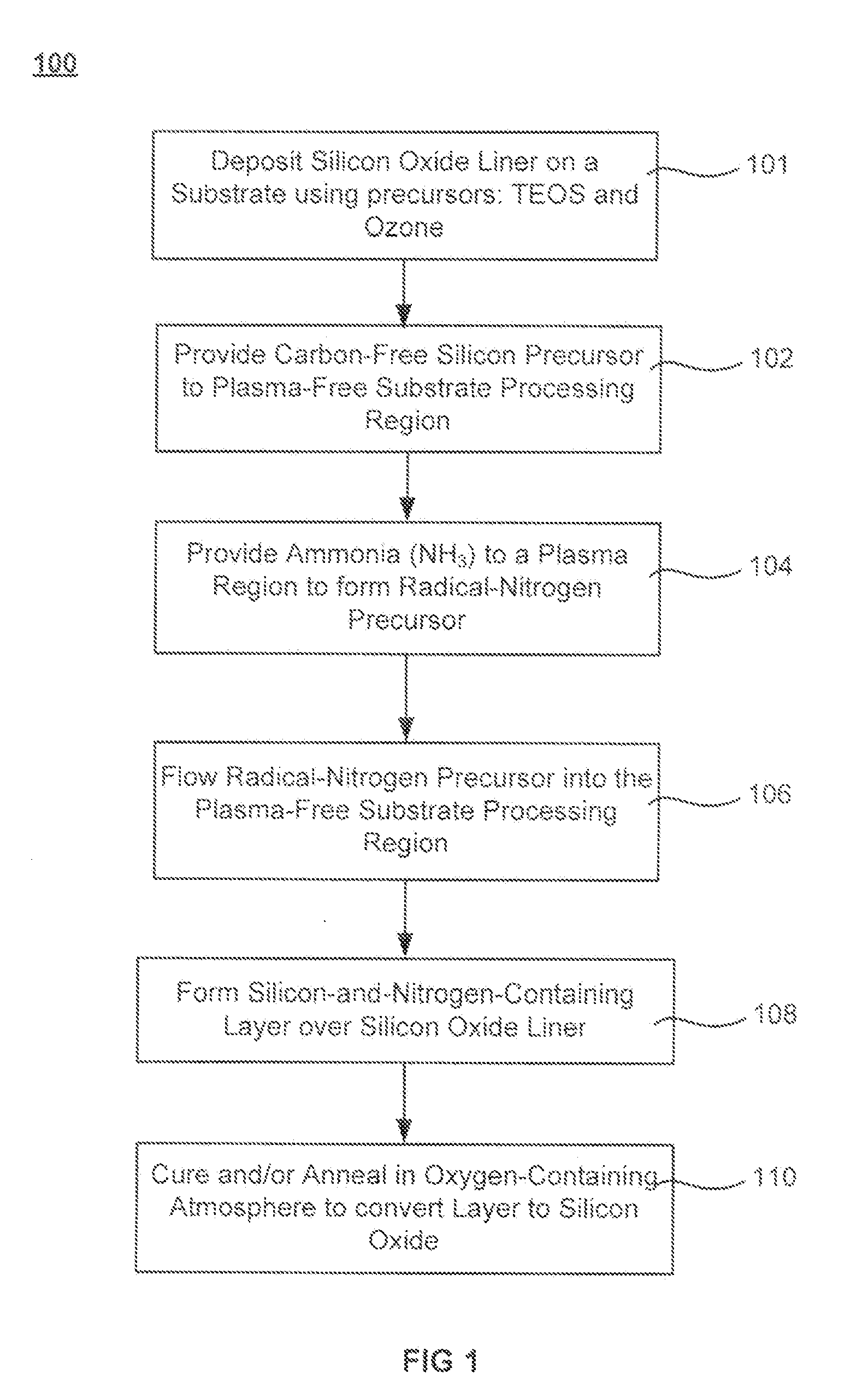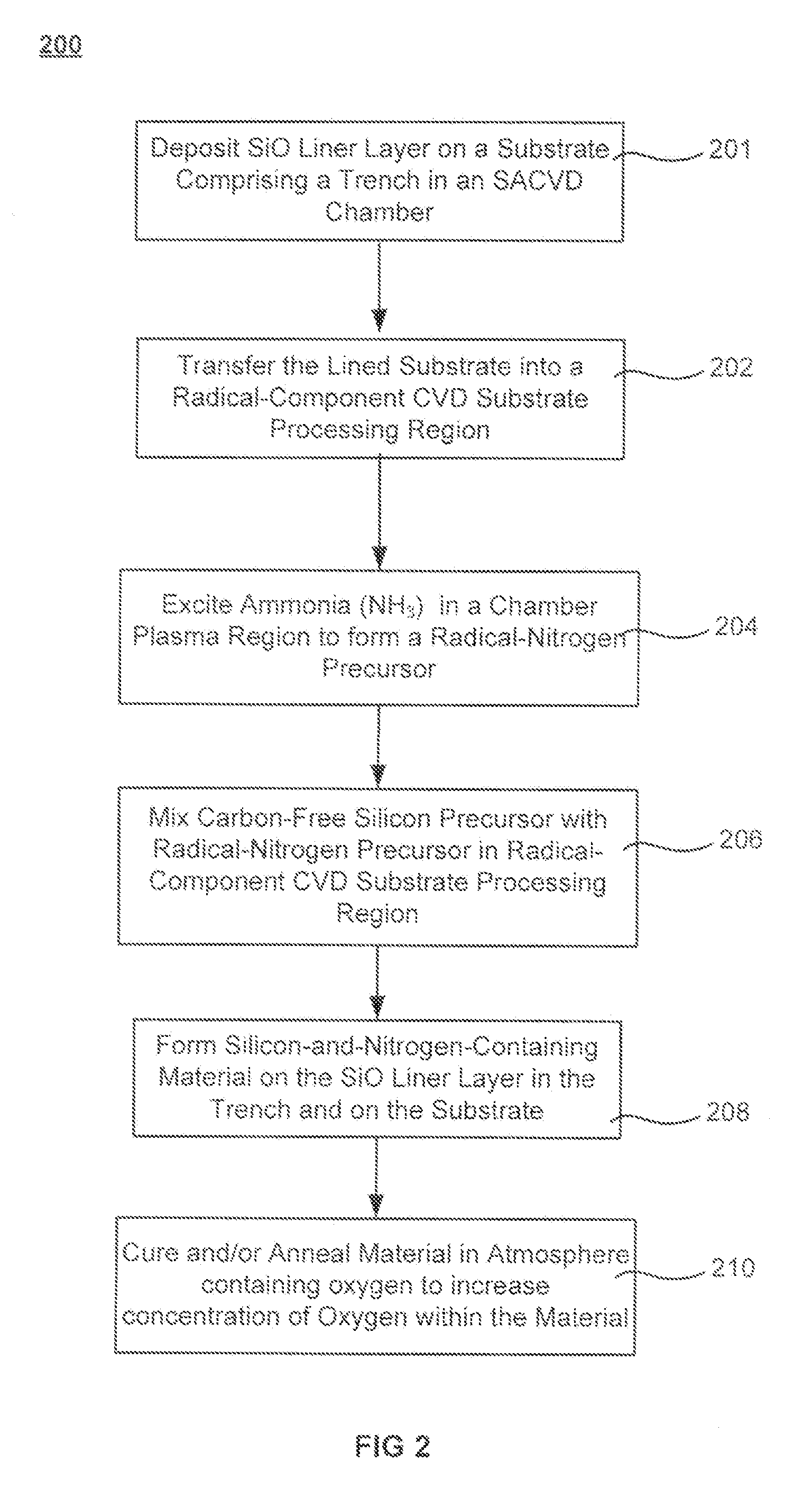Flowable dielectric using oxide liner
a flowable dielectric and oxide liner technology, applied in the direction of electric discharge tubes, coatings, chemical vapor deposition coatings, etc., can solve the problems of dielectric material, dielectric material, and structural features of the device having decreased spatial dimensions, so as to improve adhesion, smoothness and flowability
- Summary
- Abstract
- Description
- Claims
- Application Information
AI Technical Summary
Benefits of technology
Problems solved by technology
Method used
Image
Examples
Embodiment Construction
[0015]Methods of forming silicon oxide layers are described. The methods include mixing a carbon-free silicon-containing precursor with a radical-nitrogen precursor, and depositing a silicon-and-nitrogen-containing layer on a substrate. The radical-nitrogen precursor is formed in a plasma by flowing a hydrogen-and-nitrogen-containing precursor into the plasma. Prior to depositing the silicon-and-nitrogen-containing layer, a silicon oxide liner layer is formed to improve adhesion, smoothness and flowability of the silicon-and-nitrogen-containing layer. The silicon-and-nitrogen-containing layer may be converted to a silicon-and-oxygen-containing layer by curing and annealing the film. Methods also include forming a silicon oxide liner layer before applying a spin-on silicon-containing material.
[0016]Introducing an oxide liner layer between a substrate and a silicon-and-nitrogen-containing layer appears to improve adhesion and reduce incidences of delamination and cracking during and a...
PUM
| Property | Measurement | Unit |
|---|---|---|
| temperature | aaaaa | aaaaa |
| deposition temperature | aaaaa | aaaaa |
| temperature | aaaaa | aaaaa |
Abstract
Description
Claims
Application Information
 Login to View More
Login to View More - R&D
- Intellectual Property
- Life Sciences
- Materials
- Tech Scout
- Unparalleled Data Quality
- Higher Quality Content
- 60% Fewer Hallucinations
Browse by: Latest US Patents, China's latest patents, Technical Efficacy Thesaurus, Application Domain, Technology Topic, Popular Technical Reports.
© 2025 PatSnap. All rights reserved.Legal|Privacy policy|Modern Slavery Act Transparency Statement|Sitemap|About US| Contact US: help@patsnap.com



